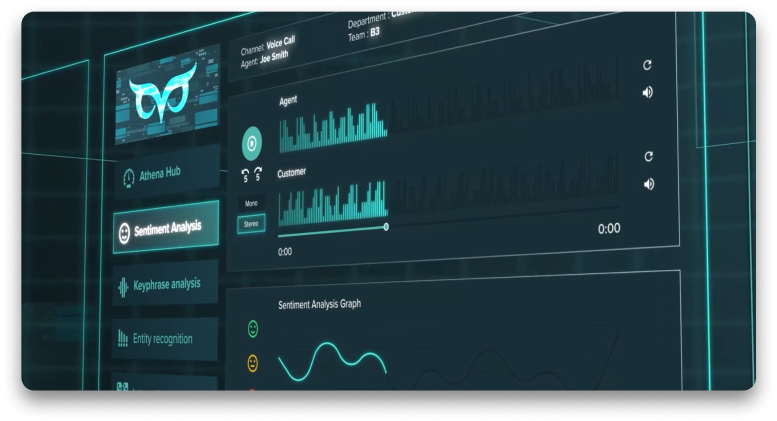Workforce Management Software
Workforce Management, also known as WFM, is crucial in modern business operations. For business owners and managers, building a skilled team is just the start. What truly sets a business apart is how effectively it utilizes its resources, particularly the talents and skills of its employees. The right Workforce Management Software can help with that.
Every business strategy aims to tackle essential questions: How can we outperform competitors in terms of efficiency and productivity? What’s the best way to allocate resources for success? Workforce Management (WFM) addresses these questions by focusing on the core of every organization—its people.
In a previous article discussing Workforce Management, we delved into its conceptual framework and operational aspects. We defined Workforce Management as follows:
Workforce Management, also known as WFM, refers to a broad range of techniques aimed at improving staff efficiency and effectiveness within an organization. It involves strategic personnel and resource allocation, attendance monitoring, and regulatory compliance to boost productivity and mitigate risks.
You’re likely aware that Workforce Management Solutions software tools can prove highly beneficial in formulating and executing a Workforce Management strategy.
Before delving further, let’s refresh our understanding: what exactly constitutes a Workforce Management Software Solution?
What is Workforce Management Software?
The rapid evolution of communication technologies has significantly reshaped various industries in recent decades, with acceleration notably observed in recent years. The Software as a Service (SaaS) and Contact Center as a Service (CCaaS) sectors have experienced substantial growth, alongside ongoing advancements in Artificial Intelligence (AI) that continually push the boundaries of innovation in business operations. These trends underscore the dynamic landscape that businesses must navigate, emphasizing the importance of adaptability and effective integration of emerging technologies to maintain competitiveness.
Workforce Management software arises within this evolving landscape. Essentially, Workforce Management Software tools are crafted to streamline and optimize tasks associated with managing a workforce within a business. Encompassing functions such as human resources, scheduling, time and attendance tracking, and performance management, WFM software plays a pivotal role in enhancing operational efficiency.
Significantly, it facilitates efficient employee scheduling, ensuring optimal coverage and resource allocation for the effective management of work shifts and assignments. The software’s capabilities extend to tracking employee work hours, attendance, and leave, providing accurate data for payroll processing and ensuring compliance with labor regulations. Task assignment is another key feature, enabling businesses to allocate responsibilities based on employees’ skills, availability, and workload, thereby promoting fair and efficient task distribution for optimized workforce productivity.
Among the benefits that the right Workforce Management Software brings to businesses are:
- Improved attendance tracking ensures accurate payroll and reduces errors.
- Automation boosts productivity and improves management of time and performance.
- Enhanced safety protocols streamline incident reporting and encourage effective employee communication.
- Cost reductions result from better tracking of employee hours and budgeted resources.
- Flexible scheduling promotes work-life balance and increases engagement.
- Error-proof forecasting anticipates demand fluctuations and optimizes staffing.
- Self-service scheduling empowers employees and enhances productivity.
- Real-time reporting provides valuable business insights.
- Remote access enables efficient task completion from mobile devices.
- Automation reduces errors in data entry for time reporting.
However, not all workforce management software options are the same. Each may offer unique features and functionalities tailored to specific industries or business types, such as contact centers or other sectors.
So, what factors should you consider when selecting workforce management software for your business? Your decision should align with your particular requirements. To begin, let’s examine the essential features of workforce management software, which we’ll delve into in the following section.
5 Essential Features in a Workforce Management Software Solution
Scheduling and Calendar
The scheduling and calendar functions efficiently allocate workforce resources. With user-friendly interfaces, managers can easily create, manage, and adjust employee schedules.
Real-time visibility into schedules keeps both managers and employees well-informed about assigned shifts, tasks, and responsibilities, ensuring transparency and accountability. Managers can access attendance metrics, organize training sessions, and oversee campaigns, resulting in workforce optimization.
Employees benefit from features like shift swapping and time-off requests for flexible scheduling. Automated notifications keep everyone informed of upcoming shifts, meetings, events, and schedule changes, fostering timely communication.
Shift Tracking
Shift tracking features in a Workforce Management Software platform is essential for monitoring employee activities during shifts. It allows managers to analyze tasks in real-time, ensuring alignment with business goals. Real-time visibility enables proactive management and facilitates quick adjustments to meet current needs. This observation also helps identify areas for improvement and recognize outstanding performance.
Overtime Management
Certain Workforce Management software platforms are capable of issuing alerts when an employee’s accumulated hours are about to trigger overtime or if an individual tries to work extra hours without prior approval.
This feature enables employers to fairly and effectively distribute overtime, thereby avoiding unnecessary payroll expenses due to unauthorized work hours.
Performance Analytics
Performance analytics features can turn a Workforce Management (WFM) platform into a powerful tool for maximizing productivity and identifying a business’s strengths and weaknesses. They measure individual and team productivity by analyzing output, task completion rates, and overall efficiency, allowing for targeted recognition and process optimization.
WFM platforms often allow organizations to track custom Key Performance Indicators (KPIs) aligned with their specific goals, providing valuable insights into performance.
For businesses valuing customer interactions, Interaction Analytics tools like Sentiment Analysis AI is a valuable feature. This technology uses advanced algorithms and Speech Analytics to analyze textual data, detecting emotional tones and attitudes in customer conversations in real-time, identifying areas for improvement and commendation within the workplace.
Labour forecasting
Forecasting in a Workforce Management (WFM) platform enhances strategic planning by aligning the workforce with dynamic business demands. Leveraging advanced algorithms and historical data, forecasting predicts future workload trends for proactive decision-making.
Anticipating staffing needs accurately is a key benefit. Organizations can predict peak work periods, seasonal fluctuations, and other trends, enabling managers to schedule shifts, allocate resources efficiently, and maintain optimal staffing levels. This minimizes the risks of understaffing or overstaffing, boosting operational efficiency.
Forecasting also aligns workforce planning with overall business goals, allowing organizations to adjust staffing levels according to demand fluctuations. This enhances adaptability and enables effective responses to changing market conditions.
Moreover, forecasting aids in budgeting and resource allocation, optimizing financial resources based on future workforce requirements. This ensures budget control and maximizes productivity while minimizing unnecessary expenses.
If you enjoyed reading this, you might also be interested in…
Customer Service AI
Conversational AI
Contact Center Artificial Intelligence
Call Center Workforce Management Software


